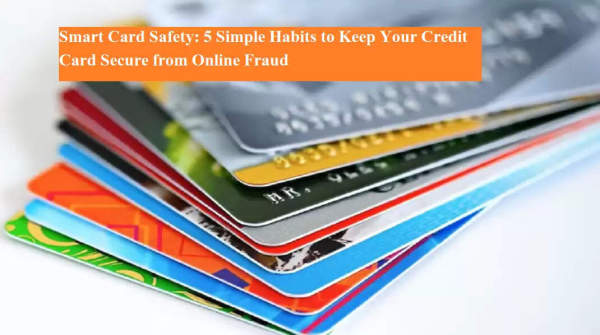
As digital payments become the norm, cards remain a popular choice because of perks such as interest-free credit periods, reward points and cashbacks. Those benefits, however, also make cards a tempting target for fraudsters. Small changes to how you handle your card and your online habits can markedly lower the chance of unauthorized use. Here are five straightforward, high-impact precautions you can start using right away.
1. Keep your card details to yourself
Never share your full card number, CVV or PIN with anyone — not over the phone, by email, or in a message. Legitimate banks and card issuers will never ask you for this information unprompted. If someone requests these details, treat it as a red flag and contact your bank directly using the number on the back of your card. Make it a habit to review your monthly card statement and flag any unfamiliar charges immediately.
2. Be careful when shopping online
Always complete transactions only on websites that show “https” and a padlock icon in the address bar — these indicate an encrypted connection. Avoid doing payments when connected to public or unsecured Wi-Fi networks; use a trusted mobile network or a private connection instead. For extra protection, consider using a virtual or disposable card for online purchases; these generate temporary details so your real card information is never exposed.
3. Turn on transaction alerts
Enable SMS and email notifications for every transaction. Real-time alerts let you spot unauthorized activity as soon as it happens so you can report it quickly. Most banks offer instant push notifications through their mobile apps, which can be even faster than SMS. If you see a charge you don’t recognize, contact your card issuer immediately to block the card and start an investigation.
4. Use your bank’s security tools
Modern cards and apps include several built-in safeguards — use them. Two-factor authentication (2FA), spending caps, biometric verification and temporary card locks are effective defenses that are easy to set up. If your bank offers EMV chip cards, prefer those over older magnetic strip cards; chips provide stronger protection against cloning and skimming. Review available security features in your banking app and enable the controls that match your comfort level.
5. Keep physical control of your card
Never hand your card to strangers and be mindful when it’s out of sight — for example, at ATMs, restaurants or shops. When you receive receipts, shred or tear them before discarding to prevent sensitive details from being retrieved. If you misplace a card or suspect it has been tampered with, report it straight away so the issuer can block it and issue a replacement.
Extra tips that add layers of protection
-
Use strong, unique passwords for banking and shopping accounts and change them periodically.
-
Avoid saving card details on websites you don’t use frequently.
-
Regularly update your phone and banking apps to get the latest security fixes.
-
If available, enable device-level protections such as screen locks and remote wipe options.
Final word
Keeping your card secure doesn’t require drastic measures — consistent, informed habits are usually enough. By safeguarding your card details, choosing secure connections for online payments, enabling alerts, using bank security features and maintaining physical control of your card, you significantly reduce the risk of fraud. Review your statements regularly and act fast if anything looks suspicious: quick reporting is often the difference between a minor inconvenience and a serious loss.
Adopt these five habits today and you’ll keep both your money and peace of mind much safer.
-
Mosquitoes Problems: 5 home remedies will get rid of mosquitoes, there will be no trace of even one. 5 home remedies to get rid of mosquitoes

-
What causes kidney attacks: Understanding its symptoms and ways to protect your kidneys |

-
World Diamond Council Head Says Lab-Grown Gem Prices Crashing: “The Bubble Has Burst”

-
Karna of Mahabharata started Surya worship, know why he is called Suryaputra

-
If you cannot go to river or lake for Chhath Puja, then do it at home.
